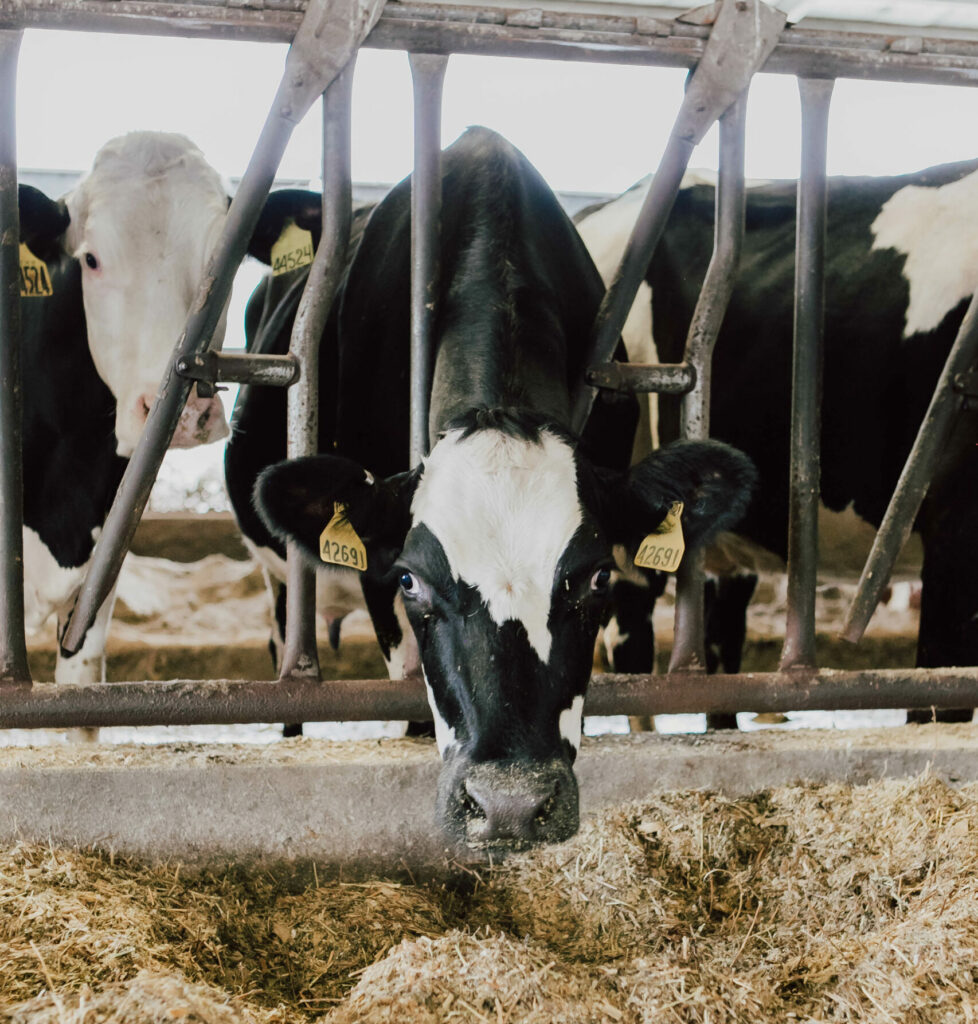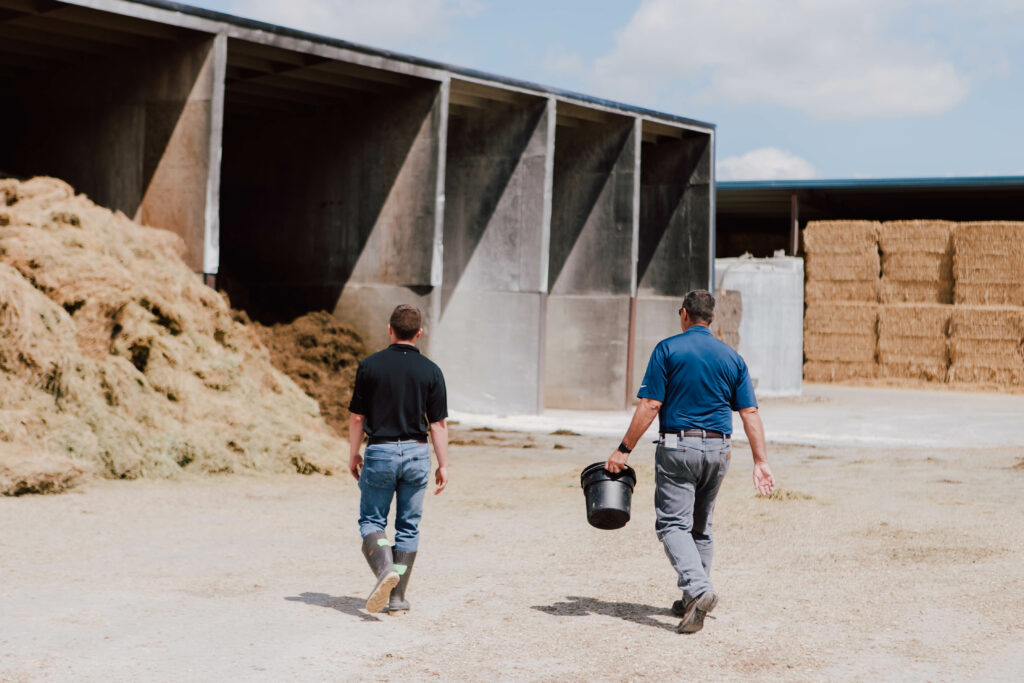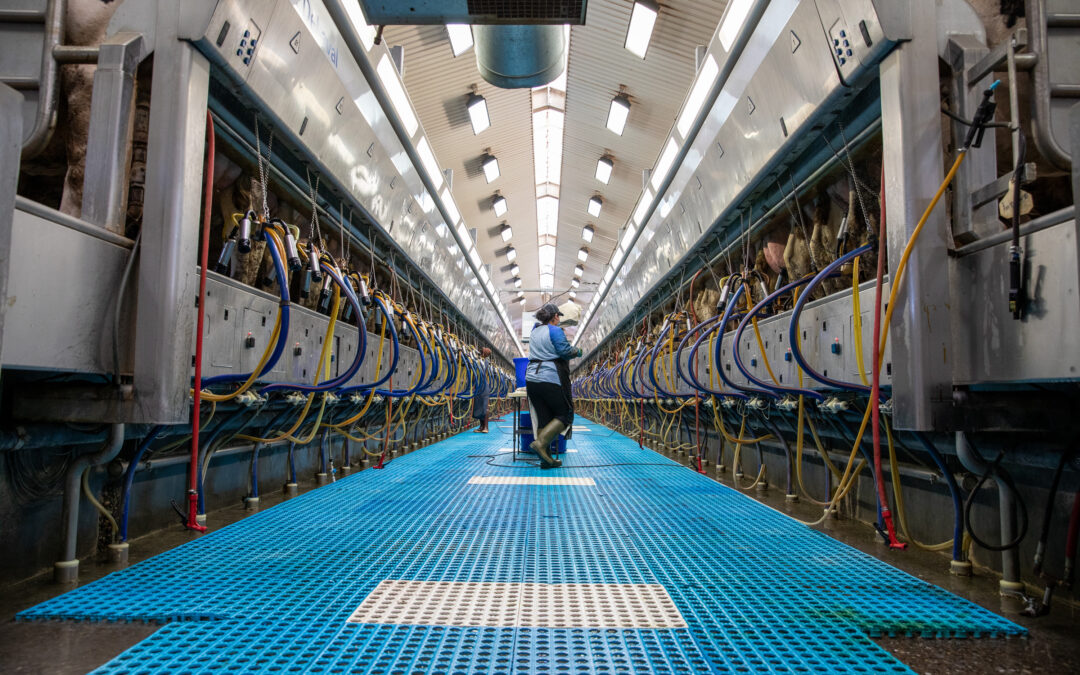Written by: Connor Willems
KEY TAKEAWAYS IN THIS ISSUE OF TECHNICAL TOPICS:
- Focus on maximizing margin instead of cutting expenses
- Knowing true cost of forages can help make economical decisions in regard to amount of forage to feed
- Look for opportunities to supply the same nutrients to the cow with more cost-effective ingredients
- Ensure that the additives being used are providing a return on their investment by closely monitoring the metric they are intended to improve

As a consulting nutritionist, margins and profitability are at the forefront of my thought process when working through recommendations for dairy producers. With diet formulation being one of the main responsibilities as a consultant, I am often asked what changes we are making in response to a milk market that is moving lower. If we have been true to keeping profitability at the forefront of every decision, there shouldn’t necessarily be large changes to the overall direction of a feeding program. Whether milk is $22/cwt or $15/cwt, if there is a move that we believe can increase margin per cwt of milk, it should be done in either case.

Feed costs are the largest expense on a dairy, accounting for over 50% of the cost of production, so it is often the first place that is targeted when we are weathering through milk prices that are at or below our cost of production. If we assume an $18/cwt cost of production, that will mean feed cost accounts for at least $9 of that. How much of a $2 drop in milk price can be absorbed by lowering that $9 of feed costs while maintaining production? If you can remove $2/cwt in feed cost and maintain output, why was that not done prior to the drop in milk price? We should strive to provide the most economical diet to the cows independent of milk price, as doing so maximizes the margin regardless.

FORAGE QUANTITY
Feeding a high forage diet is often associated with lower feed costs, but to truly evaluate its impact on total feed cost we first must understand the cost of each forage. It can be a tedious process to organize all the costs associated with growing forages, but doing so gives us valuable insight on how forage amounts impact our cost of production. Taking the total harvest weight of the forage and dividing by all of the associated costs to produce that will give you relatively close cost/ton. Even if you don’t have scaled weights, using estimates from pile or bunker measurements will get you closer than simply using an arbitrary number. With the recent rise in input cost, the value of forage may surprise you.
Once we have the costs for our forages calculated, we can run the evaluation just like we would with any other ingredient. See Table 1 below. If we begin with a 48% forage diet and raise the forage amounts 10% units (to 58%), the total diet costs drops 15 cents overall. On a purchased basis however, there will be a 71 cent difference. This will make cash flow appear to improve significantly in the short term, but in reality, we are just deferring most of the expense until we produce our next crop of forages. One must also consider their forage inventories and the feasibility of producing the tons needed to feed the increased amounts given their land base. Saving money in the short term, only to run out of the forage in 6 months, forces us to feed unfermented silage. This approach is shortsighted and will likely erase the gains we projected from doing so. As stated earlier, if we were able to feed 58% forage and it increased margins at $22 milk, why wait until the price drops to start doing so?
Table 1.

COWS REQUIRE NUTRIENTS, NOT INGREDIENTS
After we determine the amount of forage we can reasonably feed within a diet, the goal becomes to fill the rest of the cow’s intake with ingredients that will allow her to produce to her fullest potential without spending more than what the production is worth. There is a fine line between leading cows enough on nutrient requirements in early lactation to ensure optimal peak milk, and providing excess nutrients that the cow does not use.
While it is easier to just feed fixed ingredients amount in the diet that we know will provide more than adequate amounts of nutrients to achieve the production goals of the dairy, there can be significant cost savings by evaluating alternatives that provide similar nutrients. In recent months, blood meal has increased in price by about $400/ton. Other protein sources such as soybean meal, canola, and distillers, have softened significantly in price in the same time frame. Most diets I have evaluated had the opportunity to save around 15 cents a cow from reducing blood meal and rebalancing back with other protein sources to keep the nutrient amounts in the diets similar. Commodities markets are volatile, requiring more frequent evaluation, but it is vital in keeping feed costs in line with expectations.
BE MINDFUL OF ADDITIVE USE
Feed additives can certainly have a place in rations, but we must be responsible in evaluating the return we expect to get from them. That philosophy should really go with any diet change, not just additives; if we invest any amount of money into a diet, we must also track the impact in the metric we expect it to increase. That starts with having the ability to track such metrics consistently and with confidence. Component values are most often the easiest, as we receive data from our milk plants on a regular basis. Milk per cow can be calculated with well-calibrated meters or good records of cow numbers and tank weights. Recently, I have seen products promising significant gains to feed efficiency.
If a dairy doesn’t keep good record of refusal (which can be a tedious and difficult job), then the dry matter intake values can be easily misleading. If we spend 15 cents a cow on a product that states it will increase feed efficiency and we have no way of knowing it does so, it has potential to become a sunken cost.
There should be an open discussion regularly about the additives being used and why. I have come across diets in January that have a higher amount of potassium carbonate being fed with the intention to raise DCAD with the hope of maintaining a higher butterfat through heat stress challenges. Today, it seems like many products claim benefits for heat stress. If we choose to feed them, one should be mindful to stop the use at the onset of fall when temperatures fall, or at least challenge them when butterfat is high. We also often turn to binders when there is significant mold on our forages, but do we discuss taking them out when the faces clean up and cows have been healthy? I’d argue there should be just as much discussion about when we take additives out as to when we put them in!
There is no silver bullet in managing feed cost through varying milk prices. We need to make frequent and thorough evaluations of options available to alleviate the costs. From amounts of home-grown forages to be fed or rebalancing with changing commodity economics, there are multiple areas in which potential savings could be found. Carefully evaluating the return on the additives being fed can ensure there is no wasteful spending within the ration. If this is made part of our regular discussions and decisions around feed, there shouldn’t be a need for major adjustments during downtowns.



